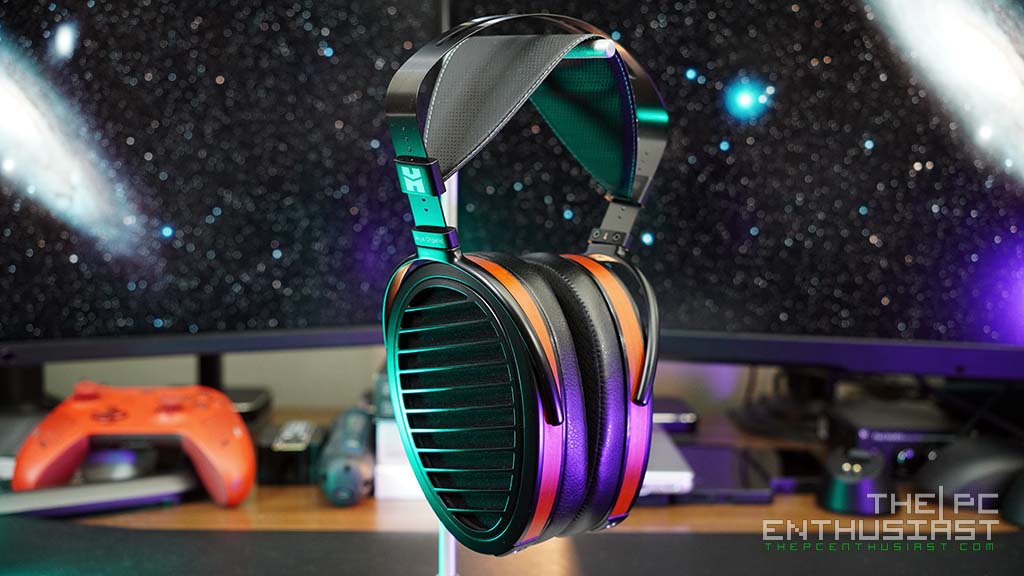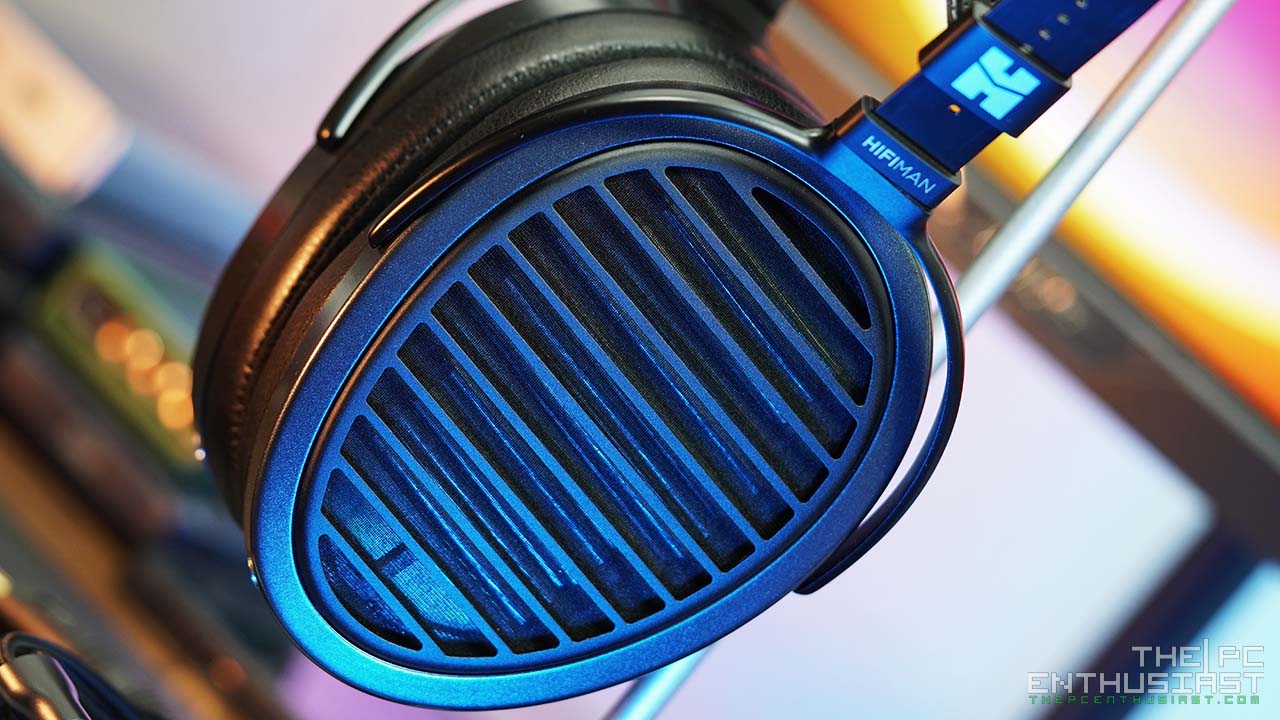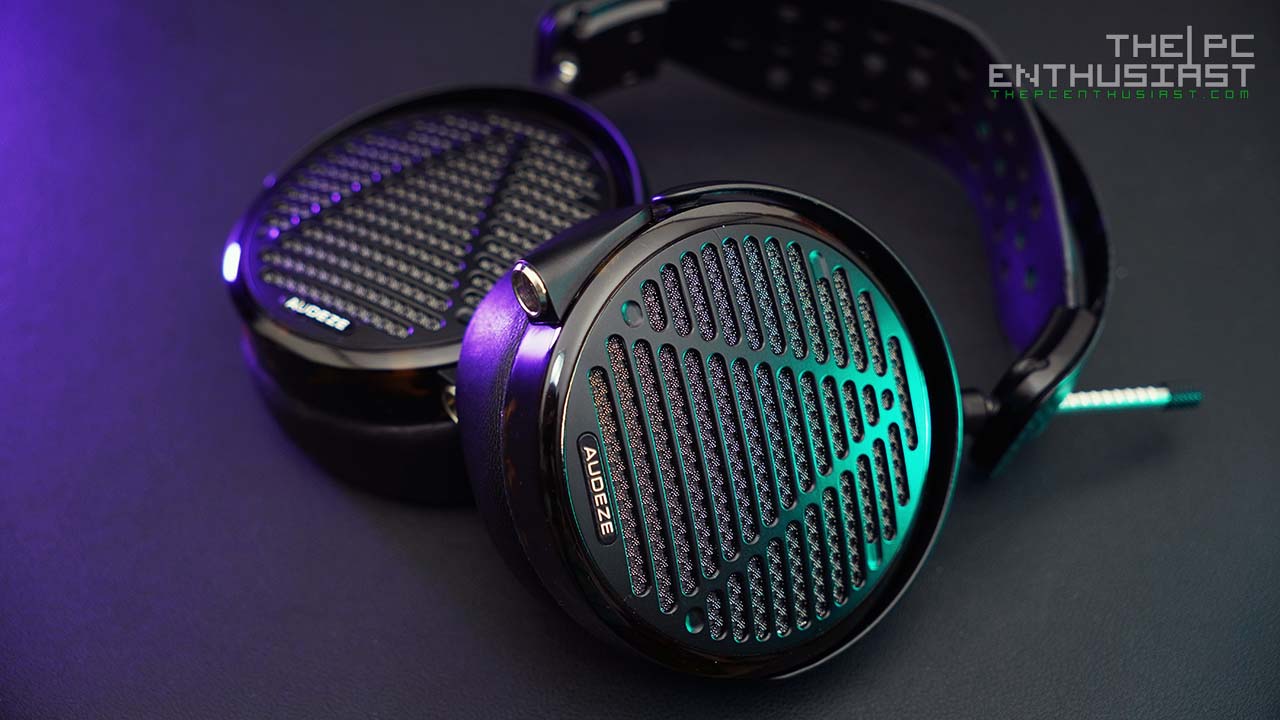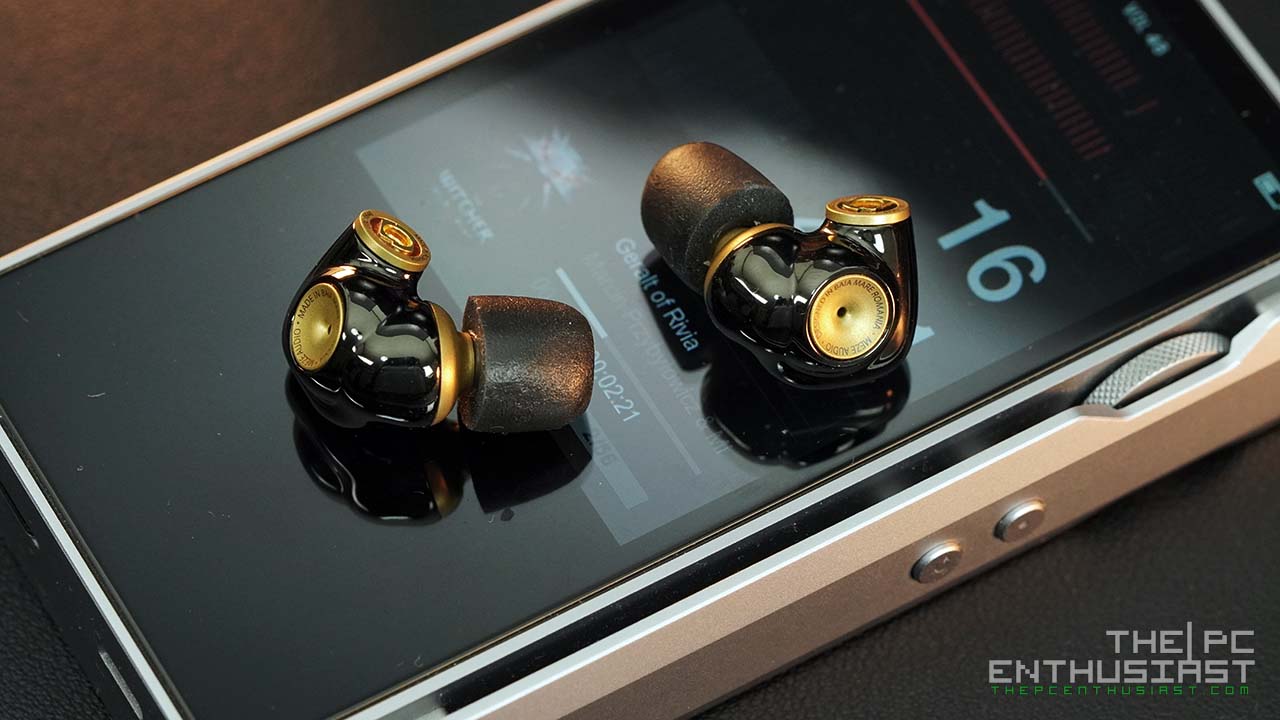The Px8 is Bowers & Wilkins’ flagship wireless noise-canceling headphones. It has been in the market for over a year, but the company has released firmware improvements since then. Aside from the firmware improvement that contributed to the sound quality, B&W also released several color themes. Four colors are now available, including the super-limited, hard-to-find Px8 McLaren Edition. Today, we’ll check out the Royal Burgundy Nappa leather edition with complementary gold detailing. Personally, I prefer the Black or McLaren edition, but the function and sound quality are the same. If you’re in the market for a wireless noise-canceling headphone, please continue reading our B&W Px8 review below.
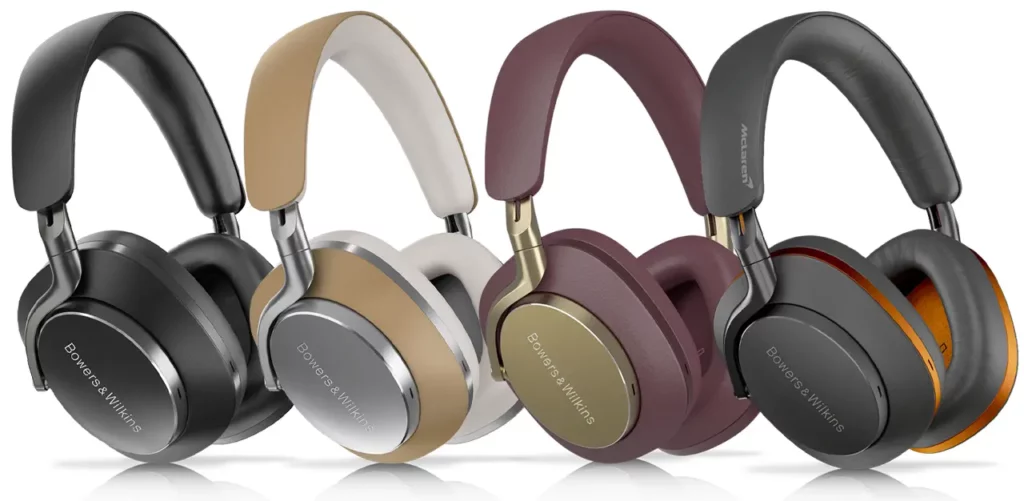
B&W Px8 Noise-Cancelling Wireless Headphone Review
At this point, I’m optimistic that most of you already know who Bowers & Wilkins is and the products they offer. But for those hearing the name/brand for the first time, B&W is a renowned British premium audio brand that was founded way back in 1966. They have a wide range of audio products and produce consumer and professional speakers and headphones.
I’m not familiar with their professional or loudspeaker lineup. But I know B&W’s loudspeakers are popular. On the consumer side of things, especially the wireless headphones, they currently have the Px8, Px7 S2e wireless headphones and the Pi7 S2 and Pi5 S2 in-ear true wireless earbuds. However, our focus for today is the Px8, their current flagship over-ear noise-canceling wireless headphones.
B&W’s Px8 features a 24-bit DSP and new 40mm Carbon Cones for enhanced resolution. According to the company, the Carbon Cone reduces distortion and enhances high-frequency details, capturing subtle nuances in your music that other headphone drive units may overlook.
In addition, the Px8 utilizes aptX Adaptive wireless technology and robust Digital Signal Processing for excellent 24-bit high-resolution sound quality from compatible streaming services. Aside from its wireless connectivity, users can connect the Px8 to a laptop via USB for high-resolution streaming.
Firmware Version
Before we proceed, I’d like to emphasize that the firmware version of my Px8 is version 3.0.0. Most of the reviews of the Px8, especially the older ones, were probably done using the older version 2.0.0 or earlier. I haven’t tested or heard what the Px8 sounded like with v2.0.0. But according to community feedback, there’s a big improvement between the v2.0.0 and v3.0.0, especially regarding sound quality. It also fixed some of the issues present in the early versions of the headphones.
B&W Px8 Specifications
| Drive units | 2x 40mm dynamic full range carbon driver |
| Microphones | 4x mics for ANC 2x mics for telephony |
| Distortion (THD) | <0.1% (1 kHz/10mW) |
| Battery type | Rechargeable Lithium Ion |
| Wearing style | Bluetooth Wireless Over-Ear Headphones |
| Technical features | Hybrid Noise Cancellation Ambient Pass-Through Wear-Detection Sensor Bluetooth® audio - Bluetooth 5.2 with aptX™ Adaptive USB-C charging & audio interface |
| Bluetooth codecs | aptX™ Adaptive aptX™ HD aptX™ AAC SBC |
| Bluetooth profiles | A2DP AVRCP HFP HSP BLE GATT (Generic Attribute Profile) |
| Battery life & charging | 30 hours playback 15 minute charge for 7 hours playback |
| In box accessories | 1.2m USB-C to 3.5mm stereo jack audio cable 1.2m USB-C to USB-C cable Carry Case |
| Net weight | 320g (without carry case) |
| Dimensions (Carry Case) | 189mm (w) x 63mm (d) x 233mm (h) |
| Finishes | Finishes Black Leather Tan & Grey Leather Galvanic Grey & Papaya Orange |
Latest pricing and availability: (#ad)
Bowers & Wilkins Px8 Over-Ear Wireless Headphones are available on Amazon here.
Packaging and Closer Look


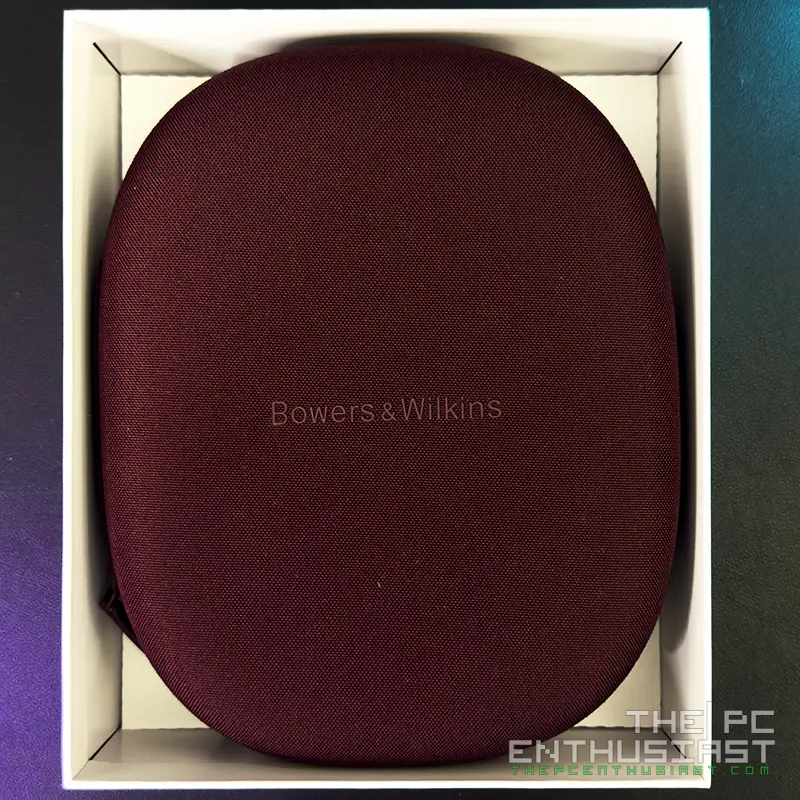
The Bowers & Wilkins Px8’s retail box is simple. It’s an all-white box with a photo of the headphones at the front, and some of its highlighted features are printed at the back. The outer box is quite sturdy and solid, but the headphone itself is cradled inside its carrying case.
The carrying case matches the color theme of the headphones, so the black one has a black carrying case. When transporting or bringing the Px8, its carrying case is solid enough to protect it. Although, it does take some space since the Px8 doesn’t fold. Underneath the carrying case, you’ll find some reading materials, including a user’s manual.
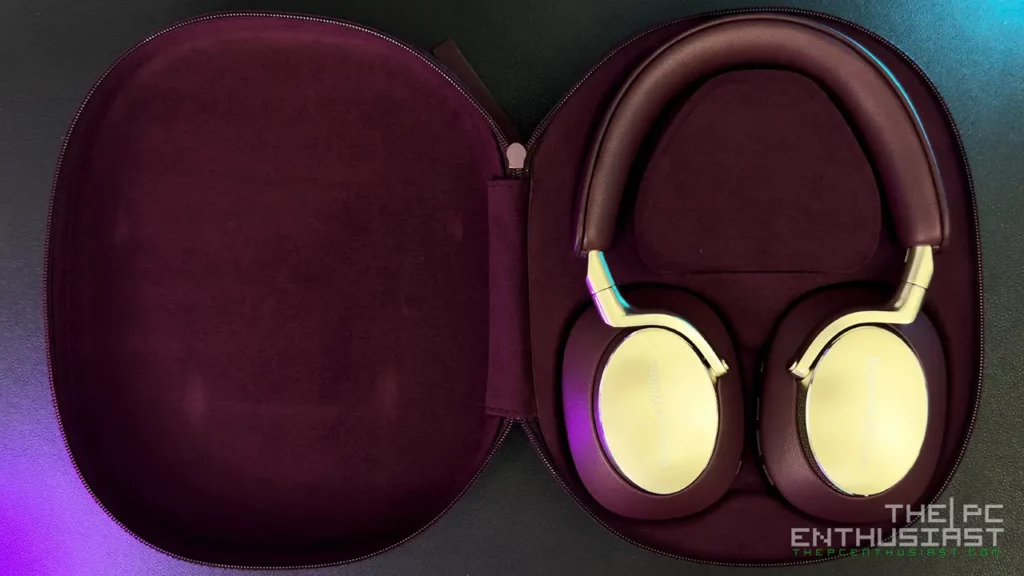
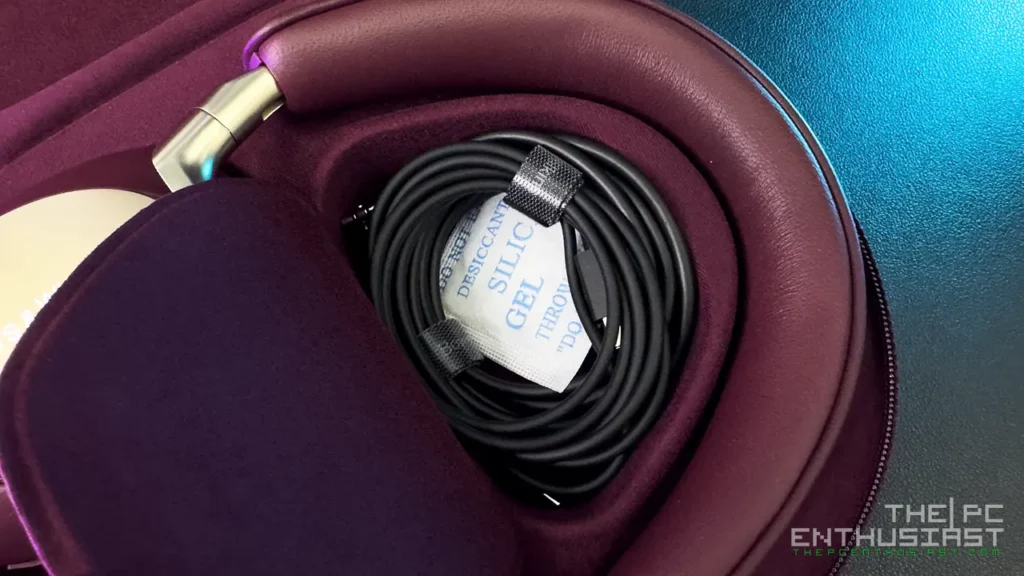
Unzipping the carrying case reveals the Px8 headphone. The photos taken using an iPhone 15 Pro Max don’t do justice to the Px8. The gold finish looks over-saturated in the pictures. However, the gold looks dull or less saturated in real life. The gold finish will look vibrant only at a certain angle or when hit by a certain light color.
The accessories, or its included cables, are hidden under a compartment in the upper center of the carrying case. Packaging includes a 1.2m USB-C to USB-C cable for wired audio and charging and a 1.2m USB-C to 3.5mm cable. Yes, it means no “real” analog signal is passing through, and the Px8’s built-in DAC is used even when using the USB-C to 3.5mm cable. It doesn’t sound as good when you use the 3.5mm headphone jack compared to USB-C to USB-C or via Bluetooth. Not to mention, the included cables are too short anyway. I recommend just using the headphones wirelessly via Bluetooth.
Style and Comfort


The design of the Px8 is very reminiscent of its predecessors, like the Px7 or Px7 S2(e). Well, there is a saying that “if it ain’t broke, don’t fix it”. I think B&W nailed the design and style; that’s why they are sticking to it but with some minimal changes and/or color changes. The arms are made of aluminum, while the earpads use memory foam.
At 320 grams, the B&W Px8 is not as light as Sony’s WH-1000XM5 (250g). But it feels more sturdy and premium on hand. The Nappa leather definitely helps, and I like that B&W used leather instead of pleather, which doesn’t last long.
Of course, despite its durability, there is a slight downside to using leather in the earpads. They tend to become warm during prolonged listening sessions. However, the experience varies from one user to another. Some prefer them (leather), while others prefer a different type of earpad surface, ex. fabric or velour pads.
Angled Carbon Cone Drive Units
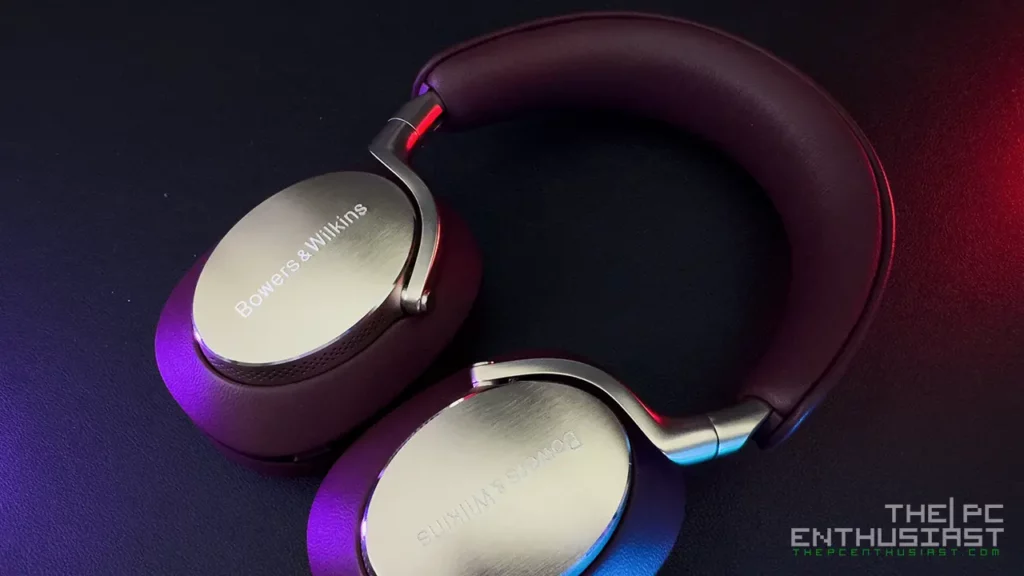
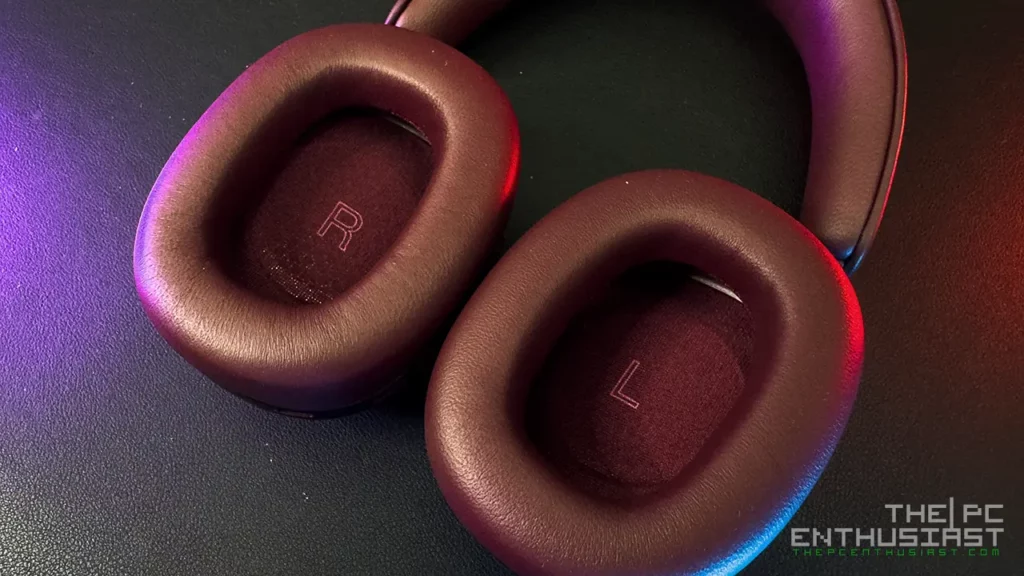

The B&W Px8’s earcups are not that big, and the insides look like a rounded rectangular. The earcups can also be rotated or tilted to suit the user’s head shape. However, the size of the opening for the ears is fixed, about 6cm in height and 4cm in width. The size is just enough for me, though I can feel the sides/tips of my ears touching the earpads.
The earpads are removable, and there are replacements for sale, although from 3rd party companies. Removing the earpads reveals the Px8’s angled Carbon Cone drive units, covered by a thin layer of cloth. According to B&W, the angled drivers enhance stereo imaging, reduce distortion, and significantly improve clarity. It also features an optimized drive unit motor system, including a revised magnet, voice coil, and surround components.

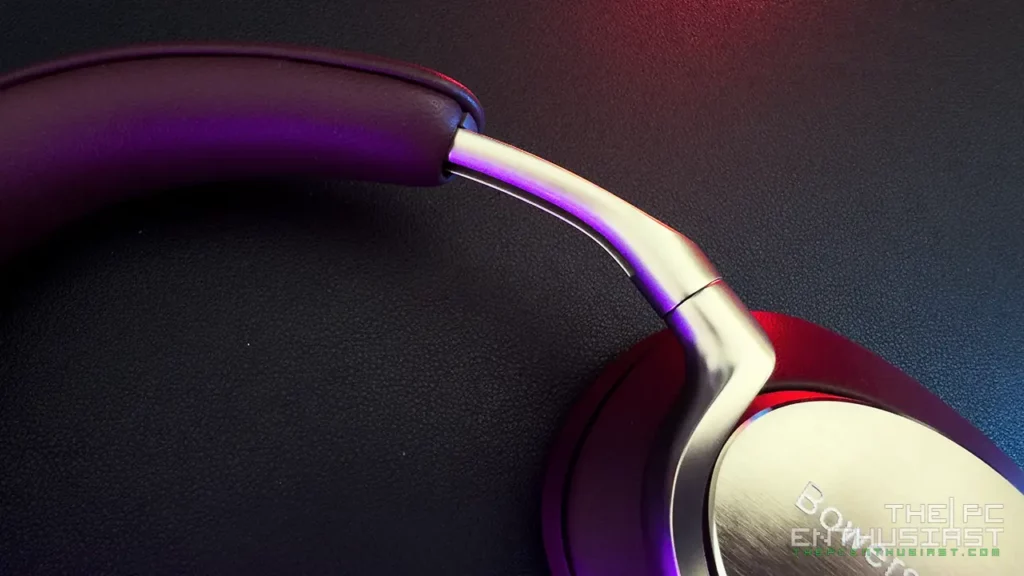
The aluminum arm of the Px8 can be adjusted; there’s no legend or indication, and neither does it lock in place. It simply slides in and out.
Overall, the Px8 is comfortable to wear. The earpads feel smooth and soft. Although I must admit, I have not continuously worn it for more than an hour. The clamping force is right for me; it’s neither strong nor weak.
The Controls
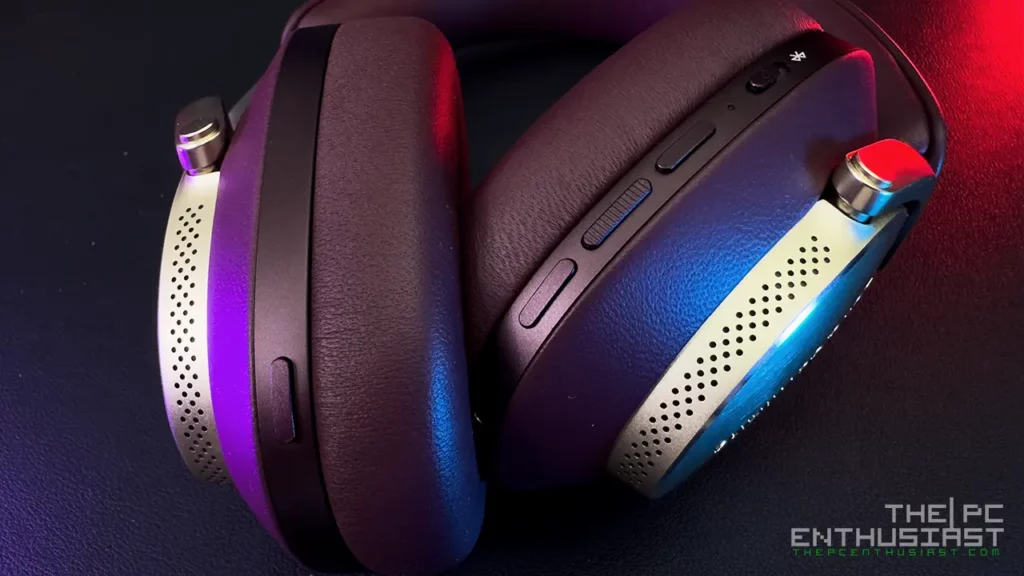
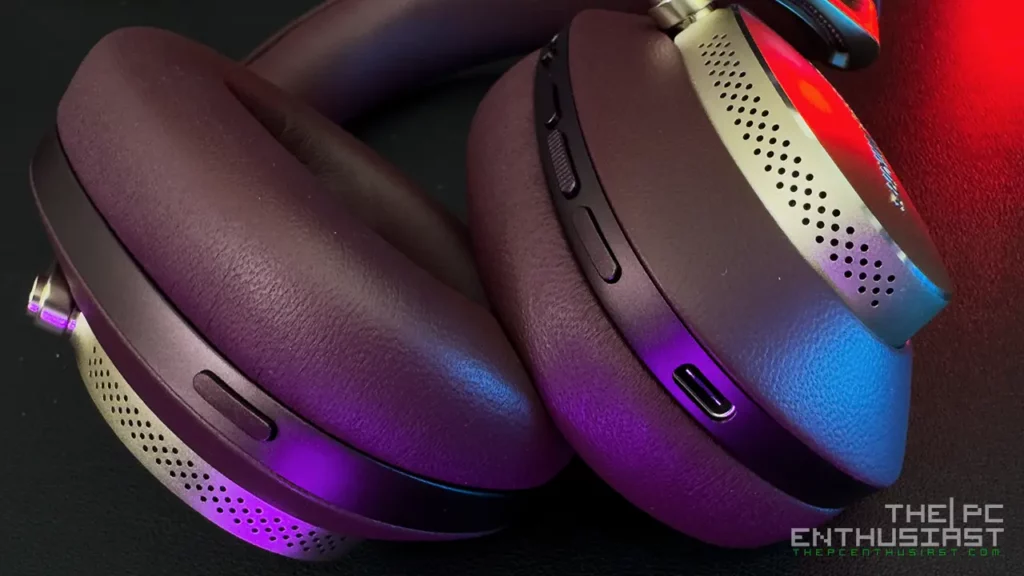
All the controls on the Px8 are physical buttons. There’s a dedicated ANC button on the left earcup, and on the right earcup, you’ll find the power/Bluetooth switch, the next and previous buttons, and the play/pause button with grooves on it. It’s hard to tell the exact location of the four mics for the ANC, but I think the two small elongated holes on the right earcup are for the two mics for voice (telephony).
The Music app


Bowers & Wilkins has the Music app, which is optional, but it is required to update the Px8’s firmware. However, I don’t think they update the headphones’ firmware regularly. The Music app combines many of the most popular high-quality streaming services, radio stations, and podcasts in one platform, with up to 24-bit/96kHz high-resolution support available depending on your streaming subscription. It also lets users adjust the treble and bass of the headphones. There is not much to do with the Music app outside of streaming; it is optional, and you don’t need it installed to use the Px8.
What I don’t like about the app is you need to signup/open an account in order for you to use it. So, unless B&W releases a new firmware update for the Px8, you’re not missing out that much without the Music app. Of course, that depends on your usage. For me who don’t use streaming apps or don’t want to consolidate them into one app, yes I wouldn’t install it.
Charing and Battery
The battery life and charging speed of the Px8 are impressive. I have yet to measure its charging time accurately, but according to B&W, a 15-minute charge offers 7 hours of playback. Although, you need an hour or so to charge it fully. Battery life is rated for 30 hours of playback, but I guess that’s the most conservative scenario. Expect actual battery life to be shorter, depending on how you use the Px8.
Subjective Sound Quality

Px8’s Active Noise Canceling
Before discussing its sound quality, I want to discuss its ANC briefly. The Px8 has two modes, or three if you count the “off” mode. But it’s primarily ANC on or Pass-through. With pass-through, the Px8 will use its mic to “listen” to your surroundings and output it to the headphones. It is a similar feature found on other wireless headphones with ANC. So, it’s basically like you are wearing an open-back headphone. But be careful, though, as pass-through is different from not wearing the headphones. It doesn’t 100% recreate the sound from your surroundings. It’s similar but not the same.
On the other hand, the Px8’s ANC is quite good. I consider Sony’s XM5’s ANC excellent, and I think they are on par with the Px8. Some people may find the ANC on the Px8 to be quite aggressive. While typing this review, I enabled ANC to see if I could hear my mechanical keyboard and the AC. I was surprised that the AC’s sound was completely removed, and the clicking sound from my typing was significantly reduced.
According to Bowers & Wilkins, the Px8’s proprietary noise-canceling technology ensures outstanding performance without impacting musicality. Six microphones work together to deliver the best results for noise cancellation and clearer voice calls. Well, I don’t doubt that, as the Px8’s ANC is quite excellent indeed.
Smooth and V-Shape Sound
Regarding sound quality, I consider the B&W Px8 to have a very “consumer-friendly sound signature”. Most people will find the sound of the Px8 to be enjoyable. It’s generally smooth and has a V-shape sound signature. If you are unfamiliar with what a V-shape is, its bass and treble are elevated or emphasized, while its mids are recessed.
The Px8 is generally a warm-sounding headphone, as are most consumer-friendly headphones. It has the “oomph” factor on its bass region but is not the most controlled or cleanest bass I have heard. There is room for improvement, but I think that requires a newer/better driver rather than simply tuning.
The vocals are clear and forward-sounding. However, depending on the type of music playing, the lows may interfere with the mids. I wouldn’t describe it as distortion, but perhaps “getting in the way”. The Px8’s bass performance is okay, and the mids are good, but the treble may be an issue, especially if you are sensitive to sibilance.
Treble Needs Improvement
Since the Px8 has a V-shape sound signature, the treble may be an issue for some. While the mids are generally clear and good, the Px8 lacks a good upper mid-range and good treble accuracy. Sometimes, vocals tend to sound veiled, and it lacks “sparkle”.
The treble can exhibit a certain amount of sibilance depending on the track or music. The “S” and “TS” sounds may be harsh, depending on the music. It’s not always, but it is present. It is safe to say that the Px8’s treble may not be the most accurate or cleanest, and there is room for improvement.
Do note that I am not a fan of V-shape headphones. So, if I ever described its sound in a critical or harsh manner, it’s because of my bias. When it comes to headphones, I prefer audiophile open-back headphones that produce clear and detailed sound and have a balanced or reference-like tonality, like the LCD-5. But those types of headphones are in a different category/niche.
However, I think the Px8 is really good for a consumer-grade ANC headphone. If people think that Sony’s XM4 or XM5 sounds good, then the Px8 is also an excellent-sounding headphone.
Pricing and Availability
The Bowers & Wilkins Px8 over-ear noise-canceling wireless headphones come with a manufacturer’s suggested retail price of $699. Prices tend to change, so visit the link below for the latest pricing and availability.
Where to buy: (#ad)
Bowers & Wilkins Px8 Over-Ear Wireless Headphones are available on Amazon here.
Bowers & Wilkins Px8 Wireless Headphone Review Conclusion
I had fun testing and using B&W’s Px8. It is an excellent ANC headphone, especially if you are outside. Its build quality and material are top-notch, though I’m sure it is not immune to wear and tear. While I wouldn’t call its mic quality (for taking calls) one of the best, it is useable, though you may sound a bit thin on the other side.
While its telephony feature might not be the best, the Px8’s active noise-canceling feature is undoubtedly one of the best out there. Using this for commuting, reducing background noise, unwanted hums, train noise, etc, the Px8 can do it. Don’t get me wrong, it’s not a magic device that can instantly transport you to a serene and quiet place. You can still hear some amount of noise, especially on a busy street or in a loud environment. But it can significantly reduce or even block unwanted noise.
However, the Px8 is not alone in the industry. There are many ANC headphones on the market. One of them is Sony’s XM5, which is (significantly) cheaper than the Px8. However, the XM5 is simply in a different category and uses materials that may not last long compared to Px8’s. And the closest rival of the Px8 is the Focal Bathys, currently selling at the same price. Fortunately for the Px8, I don’t have a Bathys to test and compare with.
At the end of the day, the Bowers & Wilkins Px8 is one of the best wireless ANC headphones currently available in the market, in my opinion. Sure, it is on the expensive side, but the materials used are better than others. If you want a (semi) luxury ANC headphone, consider the Px8 at the top of your list.


